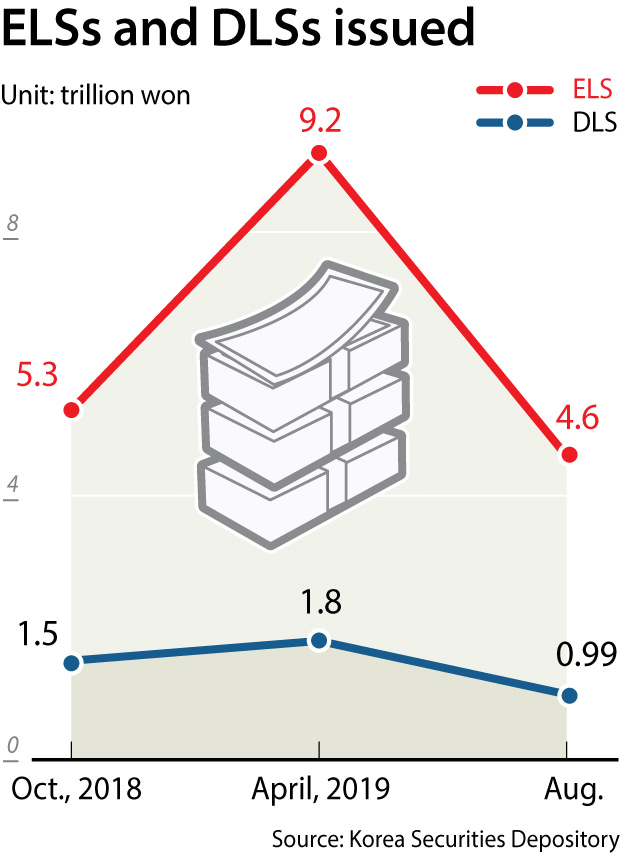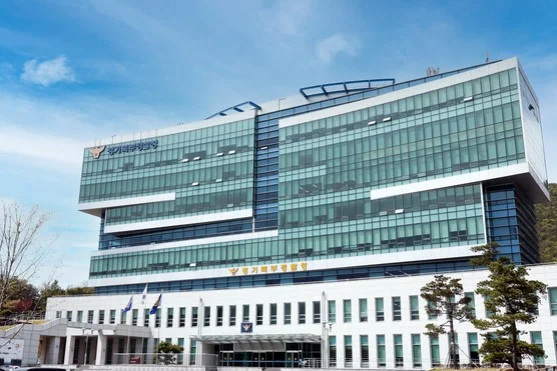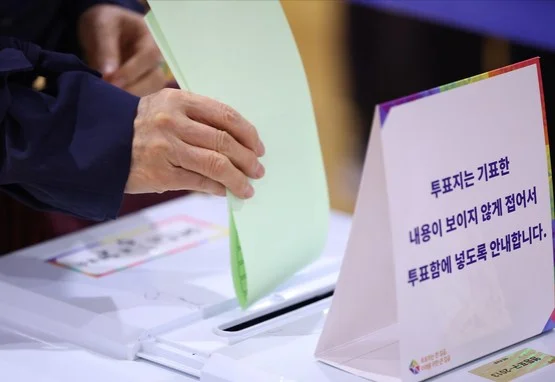영자신문읽기[고급] 신문 속 다양한 세상 이야기를 이제 영어로 만나보세요!
Risky derivatives are in fact risky, investors learn
2019-09-16

A 50-something man surnamed Kim breathed a sigh of relief when the Hong Kong government withdrew the contentious extradition bill.
He has invested 200 million won ($168,000) into an equity-linked securities (ELS) tracking the Hang Seng China Enterprises Index, a stock market index of H Shares, or the shares of Chinese mainland companies listed on the Stock Exchange of Hong Kong.
His private banker told him he wouldn’t lose money unless the H Shares plunged more than 10 percent.
“I know that the extradition bill was withdrawn, but I will never make investments linked with the H Shares,” he said, “I will switch to safer options such as global bond funds.”
In Korea’s investment scene, “derivative phobia” has set in as major derivative-linked securities (DLS) products generate huge losses as a result of the volatile geopolitics.
Derivative products can be hit hard even when instability happens 2,000 kilometers (1,243 miles) away. The consequence is the declining demand for such investment instruments and the reduced issuing of them.
Both ELSs tied with certain stock indexes and DLSs, which generally follow currency and commodity prices, are high risk. The terms are usually like this: a four to five percent rate of return, unless the price of the underlying asset declines more than 90 percent.
The maturity period usually runs from two years to three years, but investors have the right to force an early redemption every three to six months.
In the low interest-rate era, those products grew in popularity.
With the rising demand, the type of the underlying assets has been diversified to include interest rates of government bonds, gold and silver prices and credit ratings of corporations. Hundreds of DLSs were born, based on a wide range of assets and designed with a wide range of terms.
But the catch is when the asset prices fluctuate. The latest case involves the DLSs tracking the interest rates of 10-year German treasury bonds.
The prices of the German treasury bond surged and the interest rate plummeted.
The interest rate of the 10-year German treasury bond stood at minus 0.622 percent as of Sept. 6. On Aug. 28, the rate hit minus 0.714 percent, passing the minus 0.7 percent threshold that triggered losses on many of these investments.
Investors in some DLSs are also following the H Shares prices with similar anxiety.
The H Shares fell nearly 10 percent from March, but the principal of the ELSs was still safe. Even if the fall broke 10 percent, only one ELS will generate a loss of principal, according to Korea Securities Depository.
Experts warn that the investors should be wary of high-risk, high-return products.
“Some of the ELSs and DLSs without the principal protection are introduced as mid-risk products, but they are actually very high-risk investments,” said Shin Gi-young, head of private banking center of Korea Investment & Securities.
“The DLS tied with the interest rate of advanced economies’ government bonds are highly risky.”

| 번호 | 기사목록 | 날짜 | 조회수 |
|---|---|---|---|
| 60 |
 |
2024-04-19 | 1403 |
| 59 |
 |
2024-04-18 | 4353 |
| 58 |
 |
2024-04-17 | 4295 |
| 57 |
 |
2024-04-16 | 4201 |
| 56 |
 |
2024-04-15 | 4013 |
| 55 |
 |
2024-04-14 | 3823 |
| 54 |
 |
2024-04-13 | 3604 |
| 53 |
 |
2024-04-12 | 3935 |



















